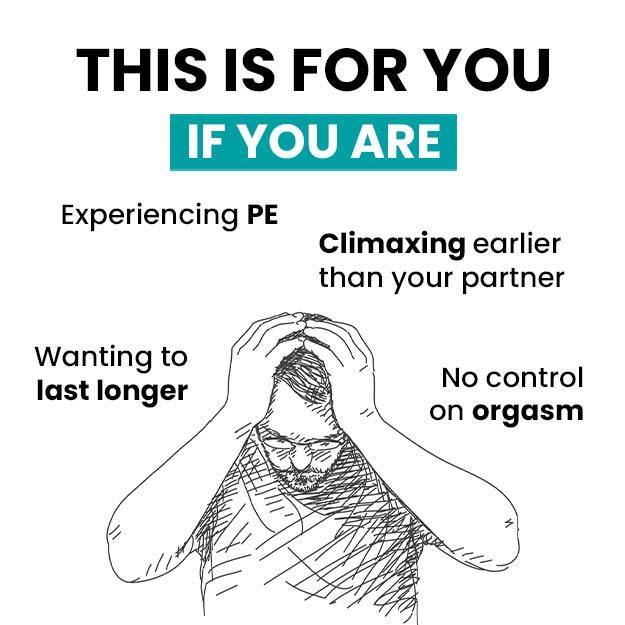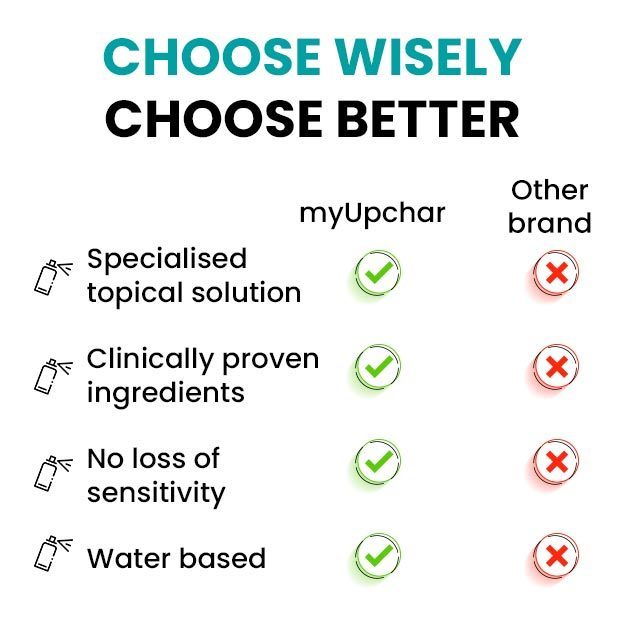The term homosexuality refers to someone’s sexual orientation wherein a person is attracted sexually, emotionally or romantically to people of the same sex (the word "homo" means same in Greek).
Often sexual orientation is assumed, based on the biological sex of a person. However, experts say that sexual orientation is not a single characteristic and is different from the biological sex of a person, their sense of being a male or female and their social gender role.
Sexual orientation is a continuum that ranges from exclusive attraction to someone of the opposite sex to exclusive attraction to the same sex. American biologist and sexologist Alfred Kinsey organised sexual behaviour into the following scale:
| 0 | Exclusively heterosexual |
| 1 | Predominantly heterosexual but incidentally homosexual |
| 2 | Predominantly heterosexual but more than incidentally homosexual |
| 3 | Equally homosexual and heterosexual |
| 4 | Predominantly homosexual but more than incidentally heterosexual |
| 5 | Predominantly homosexual but incidentally heterosexual |
| 6 | Exclusively homosexual |
| X | Asexual |
However, this is only one scale to understand homosexuality and is said to be outdated.
- Theories on what causes homosexuality
- Safe sex considerations for homosexuals
- Dealing with stigma
- Coming out to your loved ones
- History of misdiagnosis of homosexuality as a mental disorder
- Treatments that have been used (wrongly) for homosexuality
Theories on what causes homosexuality
There is no known cause of homosexuality still; however experts around the world suggest various theories for it. Here is a list of some of those theories:
A few studies done in the 1990s suggested a biological origin of homosexuality, saying that it is possible that a person is born gay. Here are some factors that are suggested to be associated with homosexuality:
Brain structure
A study done in 1990 suggested that suprachiasmatic nucleus, a part of the hypothalamus in the brain, is 1.7 times larger in homosexual men than heterosexual ones and it contains more than twice as many cells. However, it did not support the hypothesis of gender differences in the hypothalamus structure.
Suprachiasmatic nucleus is responsible for maintaining the circadian rhythms (the biological clock) in the body. Hypothalamus is a small part of the brain that controls a number of important functions in the body including the maintenance of homeostasis (keeping the body stable).
A 1991 study by Simon Le Vay, a researcher at the Salk Institute, indicated heterosexual men have twice as big INAH 3, the third interstitial nucleus of the hypothalamus, as women and homosexual men. This suggested that the size of the hypothalamus may vary, depending on the sexual orientation of a person. Le Vay had studied all this on 18 cadavers of men who were known to be homosexual in life and 1 cadaver of a bisexual person.
However, experts say the study was flawed since it did not have a control group. Questions were also raised around the assumptions made about the sexual orientation of the heterosexual men. Also, some heterosexual men had a brain cluster much smaller than the mean size suggested for homosexual men and vice versa. All of the men in the study had died of AIDS and it was suspected that the brain cluster size may have been smaller due to AIDS-related damage.
More studies suggested that corpus callosum, a nerve bundle that connects the left and right brain, in homosexual men is just like that found in women. Women have a larger corpus callosum than men.
More recent studies show that antidepressants work less effectively in homosexual people, pointing out that they have some difference in their serotonergic system, which plays an important role in maintaining cognitive function, sleep, appetite and biological clock. Antidepressants work on this system. Also, homosexual men have been shown to get hypothalamic activation (especially in areas considered to be responsible for sexual response) in response to male pheromones.
Genetic theory
In 1993, Dean Hamer, a geneticist at the National Cancer Institute, declared that he had found a genetic component that may be responsible for some cases of homosexuality. The study was wrongly picked up by media and reports of a "gay gene" were soon floating around.
Hamer had studied the pedigree of about 114 families of homosexual men and he had found that men who had a homosexual uncle or a homosexual cousin on their mother’s side were more likely to turn out to be homosexual than those who had one on their father’s side. He suggested that a gene for homosexuality may be present on the X chromosome—men get the X chromosome from their mother and Y from their father. However, there were a lot of limitations in the study, including the fact that all cases had a genetic marker since some sporadic cases were also there.
On the contrary, a huge study done on about 500,000 people suggested in 2019 that there are about five genes in the human genome (complete set of DNA) that may determine same-sex orientation but these genes are not so reliable as to be able to predict someone’s sexuality. In other words, there is no "gay gene". However, the genomes were only taken from two databases, one from the UK and one from the USA. All the studied people had European ancestry and were in the older age group—40 to 70 years—at the time of data collection. Also, this study did not include transgender people and intersex people.
Hormone theory
This is yet another theory for explaining homosexuality. Some experts have suggested that lack of androgens (male hormones) during the embryonic development in men and excess androgens during the embryonic period in women may play a role in determining sexual identity and sexual preferences.
Sex hormones play a huge role in determining the physiological and behavioural differences in genders.
Now to explain the behavioural differences only, it is suggested that the physical and behavioural traits presumably develop at different stages of embryonic development. So normal or high androgen levels during the physical development of the genitals (first trimester of pregnancy) and a drop in androgen levels during the maturation of brain (later stages of pregnancy) may cause homosexuality.
However, all these are speculations, and more studies are needed to find strong evidence for this theory.
Child sexual abuse
As per a research article published in the journal Archives of Sexual Behaviour, there are various theories about how sexual abuse at an early age may cause someone to become homosexual. One of these is that nascent same-sex orientation in childhood can lead to maltreatment or adolescents who are exploring their same-sex orientation are likely to put themselves in situations which can lead to maltreatment.
A theory suggests that children who have same-sex orientations have gender non-confirming behaviour which puts them at risk of maltreatment.
While another theory says that maltreatment increases the chances of homosexuality. This could be due to the fact that: the person loses his/her sense of self-worth and may start recognising themselves with the other stigmatised sects. Like a boy who was sexually maltreated may start to believe that he is homosexual. A girl, on the other hand, may develop an aversion to men. Incest has also been linked to the increased likelihood of homosexuality.
Arguments against these theories, however, point out that it is flawed since it says homosexuality can be learned and hence cured.
More studies are hence needed to understand this theory.
Safe sex considerations for homosexuals
The risk of STDs (sexually transmitted diseases) is high for anybody who has multiple sexual partners. As per an article published in the British Medical Journal, HIV spreads more readily with anal sex than vaginal sex. Experts suggest the use of strong condoms to avoid STDs.
Oral sex does not readily spread HIV but it can transmit other diseases, including gonorrhoea and non-specific urethritis. Similarly, diseases like giardiasis and hepatitis A can spread through oro-anal sex. It can also lead to minor cases of self-limiting diarrhoea.
Lesbians have a much lower risk of getting HIV. Gonorrhoea and chlamydia infection is also less commonly seen amongst this group. However, they can get STIs including syphilis, herpes and trichomoniasis from their female partners. Bacterial vaginosis is also commonly seen in women with same-sex partners.
Additionally, women may acquire some STIs from men and transfer them to their female partners.
Hepatitis B is more commonly seen in gay men; mostly due to multiple sex partners. Hence, health practitioners recommend that homosexual men get immunized for both hepatitis A and B.
All STDs in homosexual people are treated in the same way as in heterosexual people.
You can’t get piles or anal fissures from anal sex. Though, anal fissures, if they occur due to anal sex, could be relieved through anal relaxation techniques and anal dilators. Lubricants can also help to avoid injuries during anal sex.
Dealing with stigma
As per the Centers for Disease Control, US, homosexual people face constant stigma and prejudice in society. Homosexual people are often rejected by friends and family and may even face job and health security issues at the hands of such people. The stigma may even put some people at risk of violence, bullying and physical harassment. Combined with unhealthy coping mechanisms like drug abuse, gay stigma can affect both the mental as well as physical health of homosexual people. As per the CDC, those who experience strong rejections are three times more likely to take drugs or have risky sex and eight times more likely to commit suicide.
On the other hand, gay men who have more social support from their family and friends have reported having higher self-worth and better mental health and self-identity. So, the only way to deal with gay stigma is to understand that it is wrong and then to find support groups and surround yourself with the right people.
Coming out to your loved ones
Telling your loved ones about your sexual orientation is not an easy thing for many people, especially when there is a chance that the immediate family may be prejudiced or stigmatise same-sex love.
Experts suggest that if you are someone who is thinking of coming out to your family, you should consider the following things:
- Does your family have rigid beliefs about social order or they are flexible enough to accept new things?
- Are you financially dependent on your family?
- Is your family condition stable enough to pick up the topic? If there is some sort of tension going on in your family already, it may be better to wait it out.
- Are you comfortable with and clear about your sexuality? This would help you put your point across more confidently and clearly and keep your loved ones from doubting your judgements.
- Do you know enough about homosexuality? Will you be able to explain it better to your family when they ask questions about it? Also, it is best to keep a book or some information handy for them to read and understand.
- In case your family does not have a positive reaction, do you have a strong emotional support to handle things? It is possible that your family may take a few months or years to understand things better. Do you have enough patience?
Of course, nobody should be pushed into coming out if they are not ready to. That should be the choice of the person.
History of misdiagnosis of homosexuality as a mental disorder
Not so long ago, homosexuality and same-sex love were seen as a sin in the West. However, with the advent of science, they were quickly re-categorized as a mental health disease. Some mental health professionals called it a neurosis that could be treated. Studies mention that women were given aversion therapies using electric shock and chemical emetics (vomit-inducing medicines) to treat them of their attraction to other women.
Here is a rough timeline of the theories of homosexuality, as per a study published in the journal Behavioral Sciences:
The German author, lawyer and journalist Karl Heinrich Ulrichs is considered to be one of the earliest gay rights activists. In the late 19th century, he said that some men are born with a woman’s spirit trapped inside their body and some women are born with a man’s spirit. He thought of them as belonging to the third sex, using the term urnings for gay men and urningin for lesbians.
The terms homosexual and homosexuality were coined in the year 1869 by a Hungarian journalist Károli Mária Kertbeny. He said that homosexuality was normal and unchangeable as people are born with it.
In contrast, a German psychiatrist, Richard von Krafft-Ebing, called homosexuality a pathological condition in his Psychopathia Sexualis, which is a text on sexual pathology. In this text, he wrote that homosexuality was against Charles Darwin's theory since it includes non-procreative behaviours. He further wrote that homosexuality should be considered a congenital disease.
Later, Sigmund Freud said that every person is born with bisexual tendencies so homosexuality is a normal part of moving towards heterosexuality. Adult homosexuals may be in a stage of arrested psychosexual development; in other words, they are still immature. However, he said that it cannot be categorized as a degenerative illness because most homosexual people have high intellectual development. So even though it is not an advantage, it is nothing to be ashamed of either.
Nonetheless, after the death of Freud, homosexuality was considered to be a pathology. This change of views came about due to a Hungarian psychoanalyst Sandor Rado. As per Rado, homosexuality or bisexuality was not natural; in fact, homosexuality, he said, occurs due to a phobia of the opposite gender that develops in a person due to bad parenting.
In 1952, the American Psychiatric Association added homosexuality in the first edition of its Diagnostic and Statistical Manual (DSM) for psychological disorders. It was categorised as "sociopathic personality disturbance". In the second edition of DSM, the definition was changed to sexual orientation disturbance (SOD). Despite not being labelled a disease, the SOD category meant that a heterosexual person who is unhappy with his sexual orientation can get treatment and become homosexual.
IN DSM 3, homosexuality was again re-categorised as Ego Dystonic Homosexuality (EDH). But several questions were raised against this too and people asked if a person of colour who feels unhappy about their race should be considered mentally ill.
As a result, in the next version of DSM that was released in 1987, the American Psychiatric Association removed the EDH definition of homosexuality, accepting that it was a norm.
Treatments that have been used (wrongly) for homosexuality
During the times when homosexuality was considered a mental health condition or a pathology to be cured, various treatments were employed for converting homosexual people. Conversion therapy included things like religious counselling, estrogen therapy, electroconvulsive therapy, electric shock aversion therapy, and psychoanalysis.
A study done in the UK including about 29 men who had taken such therapies in the 1950s and two of their former partners found that most of these treatments were not only useless and distressing but also had long-term side effects. All of these people were in the age group of 13 to 40 years. Here is a look at these therapies:
As per the study, for the electric shock therapy, a person was made to sit in a chair or lie down in a bed in a dark room, usually with a professional hidden behind a screen. Electrodes were attached to the "patient’s" legs and wrist. They were then shown pictures of men and women in various stages of undress and were given an electric shock every time they felt aroused by someone of the same sex. The sessions lasted for about half an hour at a time and the person was also given mini shock boxes for when they had sexual fantasies at home. It was believed that the shock would eventually cure them of their homosexuality. Some patients took the therapy for up to two years.
Estrogen therapy was mainly given to reduce libido. Some men were told to try sexual intercourse with female friends or find a prostitute.
Most of the patients reported that the treatment did not help. Some said it freed them of their guilt for not trying anything to cure it while some reported that it worsened their feeling of shame and emotional isolation.
Dangers of conversion therapy
Conversion therapy is currently banned in various countries, including Germany, UK, Canada and various states in the US.
Various studies by medical organisations, including the American Psychological Association and American Psychiatric Association, show that this therapy is useless and may have long term side effects. Experts list the following negative effects of conversion therapy on the patient:
- While stuck in the therapy for years, the person would not come out as gay or lesbian.
- Even after the therapy, when they decide to come out, the effect of the therapy may cause sexual and intimacy issues for them.
- Some people may start to question their faith and motivation when they see the therapy failing. They may become anxious, depressed and may even become suicidal.
- A lot of homosexual people are pushed to get married while on conversion therapy. By the time the therapy fails, these people have families (children), which then suffer too, especially if religious beliefs don’t let the couple get a divorce.
Doctors for sexual disorders and issues

Dr. Hakeem Basit khan
Sexology
15 Years of Experience

Dr. Zeeshan Khan
Sexology
9 Years of Experience

Dr. Nizamuddin
Sexology
5 Years of Experience

Dr. Tahir
Sexology
20 Years of Experience
References
- SexInfo Online [Internet]. University of California. Santa Barbara. California. US; Homosexuality
- Carr Sarah, Spandler Helen. Hidden from history? A brief modern history of the psychiatric “treatment” of lesbian and bisexual women in England. The Lancet. 2019 Feb; 6(4): 289-290.
- Drescher Jack. Out of DSM: Depathologizing Homosexuality. Behav Sci (Basel). 2015 Dec; 5(4): 565–575. PMID: 26690228.
- Science Direct (Elsevier) [Internet]; Suprachiasmatic Nucleus
- You and your Hormones [internet]. Society for Endocrinology. Bristol. U.K.; Hypothalamus
- Dick F. Swaab. Sexual orientation and its basis in brain structure and function. Proc Natl Acad Sci U S A. 2008 Jul 29; 105(30): 10273–10274. PMID: 18653758.
- Mann J John. Role of the Serotonergic System in the Pathogenesis of Major Depression and Suicidal Behavior. Neuropsychopharmacology. 1999; 21: 99–105
- Kinnunen LH, Moltz H, Metz J, Cooper M. Differential brain activation in exclusively homosexual and heterosexual men produced by the selective serotonin reuptake inhibitor, fluoxetine. Brain Res. 2004;1024(1-2):251‐254. PMID: 15451388.
- Ganna Andrea, et al. Large-scale GWAS reveals insights into the genetic architecture of same-sex sexual behavior. Science. 2019 Aug; 365(6456): eaat7693
- Balthazart Jacques. Minireview: Hormones and Human Sexual Orientation. Endocrinology. 2011 Aug; 152(8): 2937–2947. PMID: 21693676.
- Roberts Andrea L., Glymour M. Maria, Koenen Karestan C. Does Maltreatment in Childhood Affect Sexual Orientation in Adulthood?. Arch Sex Behav. 2013 Feb; 42(2): 161–171. PMID: 22976519.
- Cameron Paul, Cameron Kirk. Does Incest Cause Homosexuality?. Psychological Reports. 1995; 76(2): 611-621.
- Smith Glenn, Barlett Annie, King Michael. Treatments of homosexuality in Britain since the 1950s—an oral history: the experience of patients. BMJ. 2004; 328.
- Drescher Jack. The Growing Regulation of Conversion Therapy. J Med Regul. 2016; 102(2): 7–12. PMID: 27754500.
- Robin Bell. Homosexual men and women. BMJ. 1999 Feb 13; 318(7181): 452–455. PMID: 9974466.
- Centers for Disease Control and Prevention [internet]. Atlanta (GA): US Department of Health and Human Services; Stigma and Discrimination
- Ct.gov: Connecticut's Official State Website [Internet]. US; Knowing what to expect























